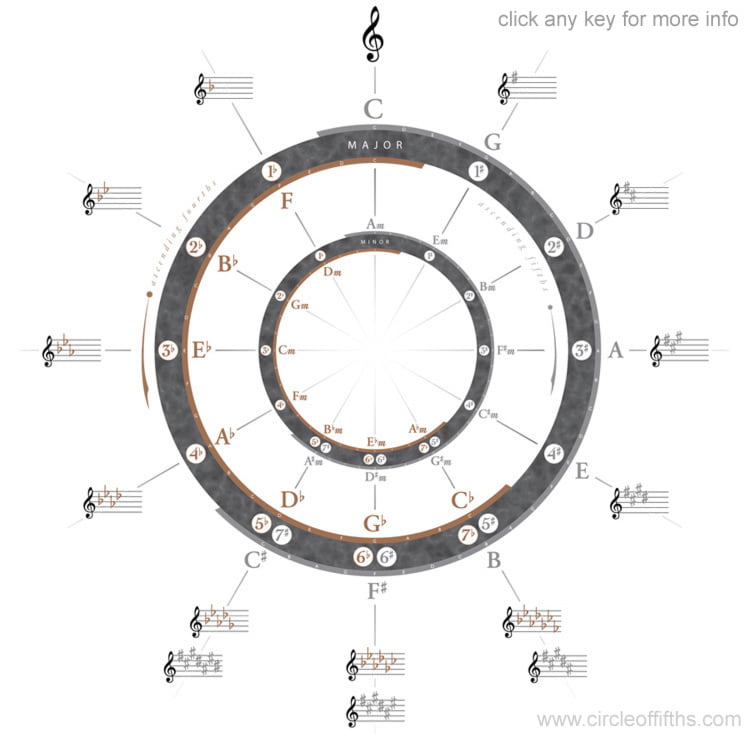Circle of Fifths

For any aspiring musicians and producers, a sound knowledge of music theory is required. The basis of Western music theory lies with the circle of fifths. The circle of fifths shows tonalities ordered by ascending (for sharp keys) or descending (for flat keys) intervals. The circle of fifths is depicted above as a chart that shows the relationship between keys, the number of sharps or flats in a given key signature, and is essential for composing and harmonizing. Beginning with the key of C (no sharps or flats) the circle is laid out like a clock depicting the twelve keys. Each hour on the clock is the fifth scale note of the preceding key. For example, given the C major scale, (C D E F G A B C) the fifth note is G. This gives us our next hour in the one position on the clock. The closer keys are on the circle of fifths the greater their tonal relationship. This means the chords work well together. Use the resources below to access free circle of fifths instructional sites. Try utilizing the circle of fifths when composing your next piece.
Resources:
http://www.circle-of-fifths.net/lesson07.html
http://www.dummies.com/how-to/content/the-circle-of-fifths-a-brief-history.html
http://www.circleoffifths.com/
http://www.merriam-webster.com/dictionary/circle%20of%20fifths
Do you have questions about our recent news or upcoming events? Let us know.
Learn How